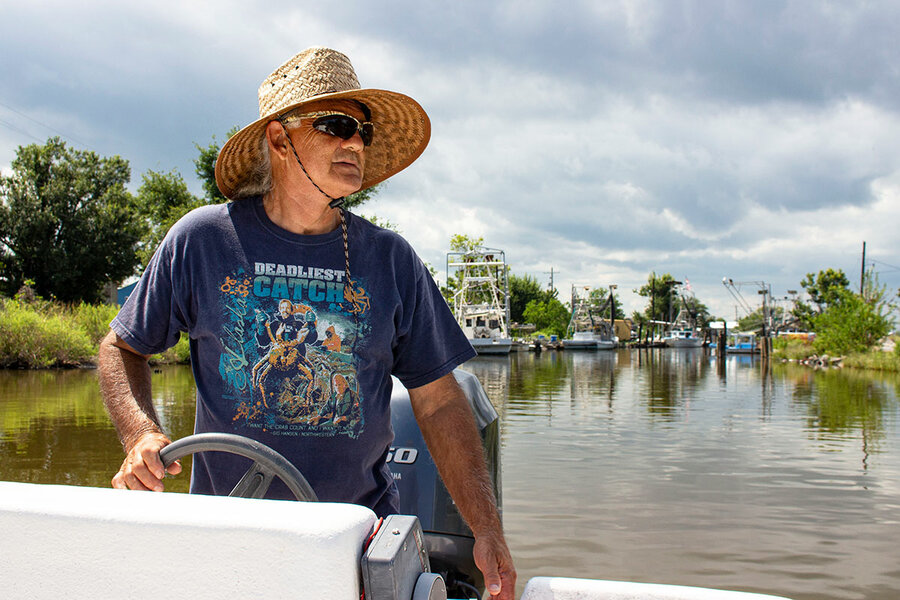Original publication by Lauren Sommer for npr.org on 25 June 2023

Ryan Kellman
Fishing boats would normally still be unloading Dungeness crabs at San Francisco’s fisherman’s wharf in May. This year, the docks were quiet, except for one berth.
“We’re the only boat right now,” says Brand Little, standing next to a large tank of bright red crabs on the deck of his boat, the Pale Horse.
State regulators closed the Dungeness season two months early this year, due to the arrival of humpback whales in the area. On both the East and West Coasts, crab and lobster fishermen are seeing their fishing seasons shrink over concerns that whales are getting entangled in the long ropes attached to their gear, accidents that often end up injuring or killing the animals.

Lauren Sommer/NPR
But Little is still fishing, because he’s trying out a system that many hope will be a technological fix to the problem: “pop-up” fishing gear.
Normally, crabs and lobster traps sit on the bottom of the ocean and are tethered to the surface by a rope that can stretch hundreds of feet. Pop-up fishing gear, also known as on-demand or ropeless gear, keeps the rope and buoy stowed on the ocean floor, until the fisherman comes to retrieve it. This spring, a dozen lobstermen were also permitted to fish in closed areas off Massachusetts and Rhode Island with pop-up gear.
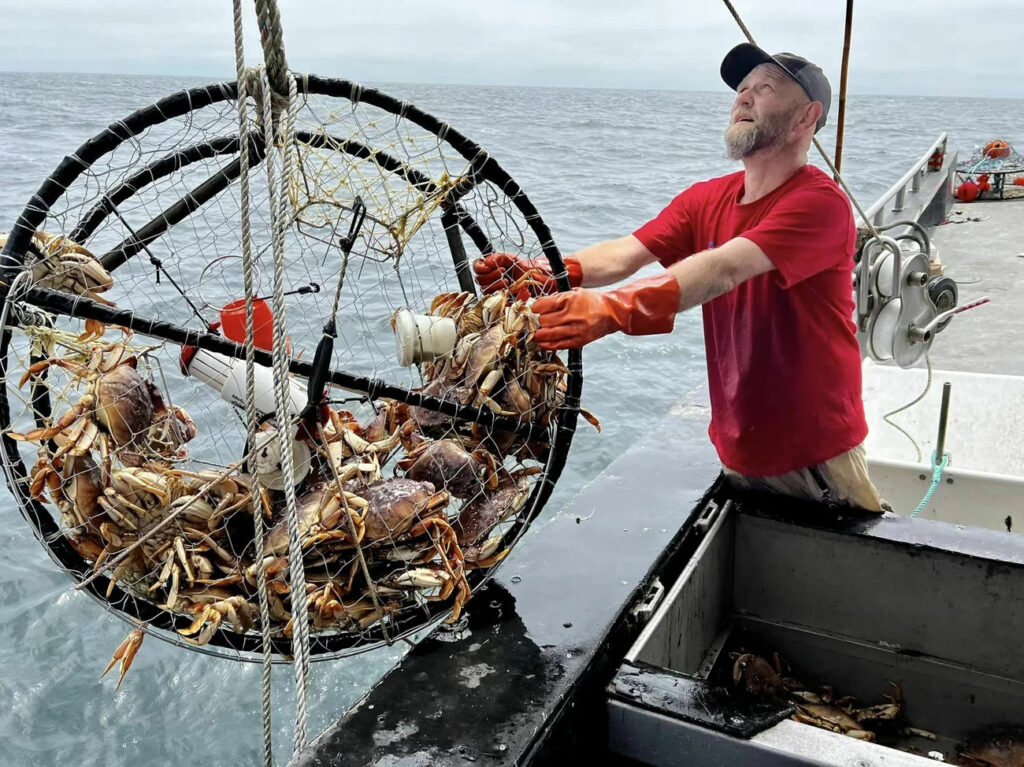
Brand Little
The new gear has the potential to help whales and fishermen alike, but it isn’t a quick fix. There are technical issues to iron out, including ensuring the gear can be used in crowded areas. The cost for each pop-up system can also run thousands of dollars, a massive expenditure for boats that would need to buy hundreds.
Within the fishing community, there’s also reluctance to even test the equipment because many fishermen fear government regulators will mandate it.
Still, the urgency to make the gear work is growing, as fishermen keep taking financial hits and whales remain at risk. On the East Coast, North Atlantic right whales are dangerously close to extinction and more than 85% show injuries from being entangled.

Claire Harbage/NPR
“I think this on-demand system, this ropeless fishing, is a very human way to tackle the problem because it’s technology,” says Mark Baumgartner, senior scientist at the Woods Hole Oceanographic Institution. “What we’re good at is coming up with technology to solve problems.”
Testing pop-up gear in the water
On a Saturday morning, a steady stream of customers stop by Little’s boat to snag a few crabs. Little’s catch is far less than he’d get at the peak of crab season, but his goal is to test the pop-up fishing gear and look for pitfalls.
“That’s what fishermen need to do – be part of the development of it or take what’s handed to you,” he says. “And 90% of what’s out there I would not want to be handed.”
The system works like this: the large round crab trap is tossed overboard along with a coiled rope, buoy and inflatable bag. After it’s collected crabs on the seafloor, Little returns, finding the trap on an app. He hits a button, sending an acoustic signal to release the rope and buoy, which rise to the surface. Other gear manufacturers have different variations of this system.
Little says he was skeptical at first, but has found the gear has potential. The last few years have been tough on him and the rest of California’s crab fleet. The season opening was also delayed several times in recent years, after humpback whales returned to coastal waters on their yearly migration in the winter.

Ryan Kellman
Lobster fishermen on the East Coast have faced similar closures over North Atlantic right whales. Only around 340 right whales remain in the population and federal officials have documented dozens of entanglements since 2017. The whales feed by swimming slowly with open mouths, making them vulnerable to long ropes hanging in the water. The injuries can be grisly. Ropes dig into the whale’s flesh, exhausting or killing whales after they drag the gear for miles. Earlier this year, rescuers worked for 3 days to remove more than 150 feet of rope from a whale, equipment later linked to the Canadian fishing industry.
Concerns about whales led Whole Foods to announce last spring that it would no longer sell live lobsters from Maine. The controversy has been intense, with Maine’s lobster industry contending that no whale deaths have been linked to their fishery.
It’s challenging for regulators to determine exactly where whales are being entangled. Many injured whales are found after the ropes have fallen off, and federal rules only recently required fishermen to put color coding on their ropes to better identify where they came from. As the oceans get hotter with climate change, right whales have also been shifting their migration, spending less time in Maine waters.
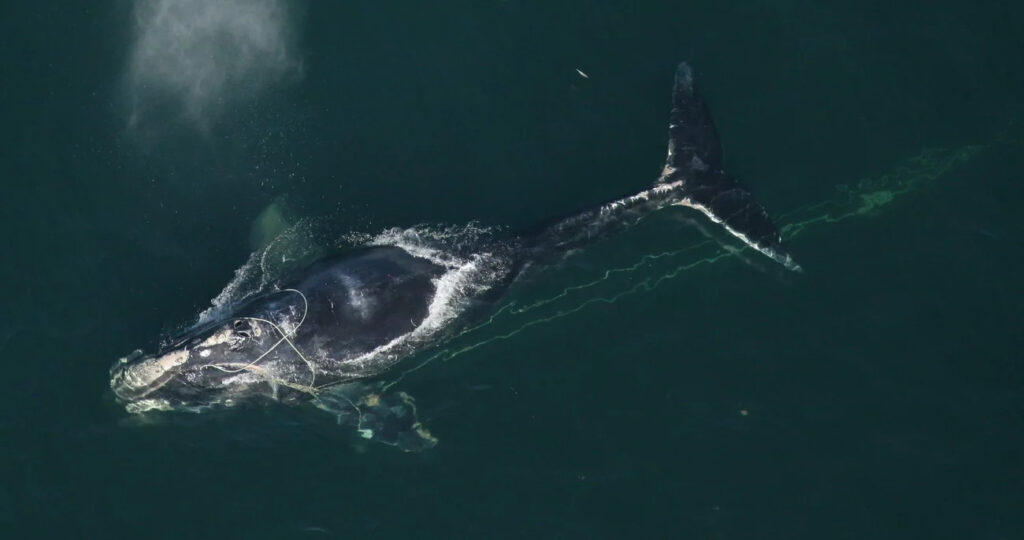
NOAA News Archive 123110
Some fishermen hesitant to dive in
On social media, Little has been posting when “whale-safe” crab is available to help customers understand what fishermen are doing about the problem.
“For me, it’s adapt or die,” he says. “You gotta roll with the punches. This problem isn’t going away without changing the way we do stuff.”
Still, his willingness to test out the new fishing gear has not made him popular at the docks.
“I get a lot of flack,” Little says. “There’s a lot of guys really upset with me for doing this.”
On the East Coast, gear testing has faced a similar atmosphere of doubt. Dave Casoni, who has been lobstering off Cape Cod for five decades, said he’s tested pop-up gear, but there’s a fair amount of peer pressure to steer clear over worries it will bring more regulation.
“Maybe it would send a message that: see, the industry did it, therefore they were in favor of it,” Casoni says. “I was accused of that and I had not intended to do that. I intended to find the shortfalls.”
NOAA’s Northeast Fisheries Science Center has created a library of ropeless gear, where fishermen can test gear in the water and help provide feedback to manufacturers. But of more than 5,000 lobstermen in New England, only 50 have used the library since it was created several years ago.

Claire Harbage/NPR
Patrice Maccarron, policy director of the Maine Lobstermen’s Association, says the fear among fishermen is that if regulators see them using pop-up gear, they’ll mandate it year-round, even when whales are not present. But some lobstermen are still trying to be part of the process.
“They tend to be younger people with families who want to be in the fishery,” Maccarron says. “And they’re thinking, you know, I don’t want to do this. This is going to be really hard. But I also don’t want my livelihood to be removed and to reach a point where we don’t have options.”
As the fishery closures have mounted, hitting the more than $500 million lobster industry, the conversation is shifting, albeit slowly.
“I think we’re now seeing a lot more willingness to try this, a lot more feedback, a lot more people who are understanding that we’re simply trying to provide fishermen a tool so they can access these closed areas,” says Henry Milliken, who helps run the gear library at NOAA’s Northeast Fisheries Science Center.

Ryan Kellman
Technical issues still remain
Pop-up gear may work well in tests, but many fishermen worry it could be a different story when hundreds of boats use it during a busy commercial fishing season.
Buoys on the surface normally mark where traps are located, so fishermen can avoid putting their traps on top of someone else’s. With pop-up gear, fishermen would need to use an app or their onboard navigation system to see where traps already are on the seafloor. And some worry there could be conflict when boats are working close together.
“It’s very, very congested,” Casoni says. “So I think the fear is it would create more problems amongst each other just fishing. It’s a very busy, dangerous operation to begin with, and we don’t need to add that.”
To prevent problems, fishing gear made by different manufacturers needs to show up on the same maps, just as cell phones from different carriers can all use the same network. NOAA plans on holding a workshop this fall to develop universal technical standards for manufacturers.
Then there’s the question how much slower it is to use pop-up gear. Dick Ogg, a crab fisherman from Bodega Bay, California, says he’s tested the gear. He points out that fishermen work with hundreds of traps during already grueling work days, and adding any extra time with new gear would be an economic hit.
“The process is very fast and it’s important to understand if we alter any of this, it has to be comparable,” Ogg says. “If I do one extra minute on my pot allocation, that’s an extra 5.8 hours a day.”
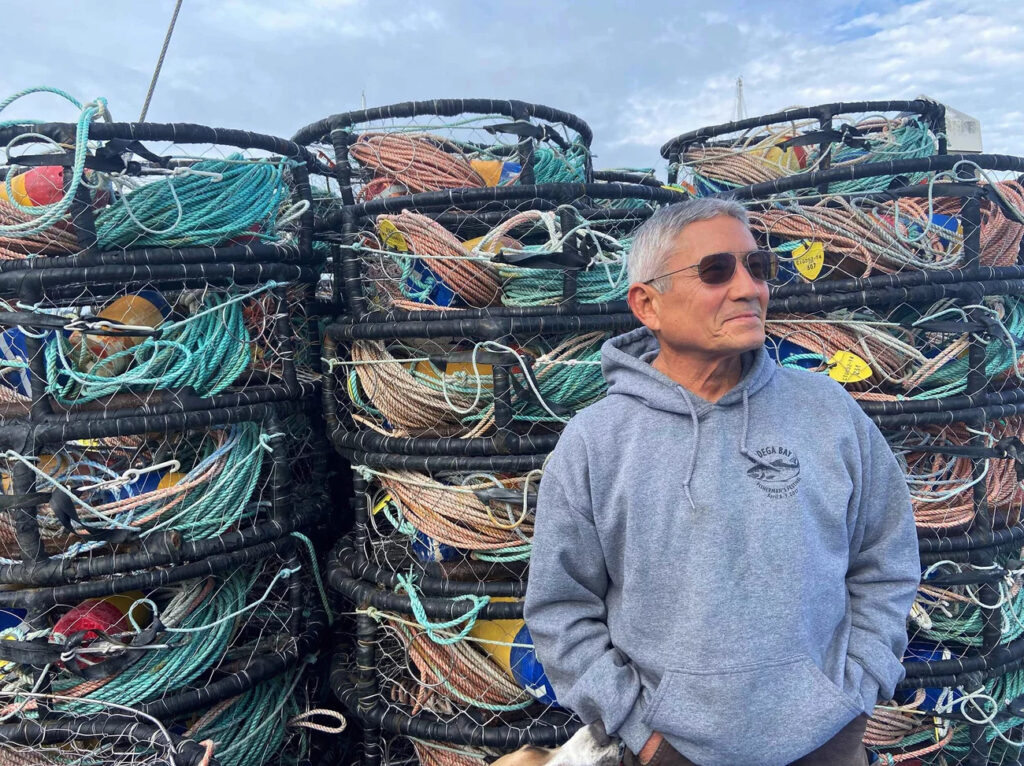
Lauren Sommer/NPR
The price tag for pop-up systems can cost from hundreds to thousands of dollars per unit, which adds up for boats with hundreds of traps. To deploy the gear in a fishery equitably, boats would likely need grants or loans to defray the costs.
“If we bring in a capital-intensive model, we know our small boats don’t have that sort of operating capital,” McCarron says. “And, you know, there’s a very, very strong concern that we’re going to lose them and there won’t be a place for them.”
New resources to make pop-up gear work
To accelerate the process, the federal government is putting almost $68 million towards efforts to help North Atlantic right whales this year, funding that comes from the Inflation Reduction Act and the omnibus spending bill passed in December. Of that, $27 million will go to new kinds of fishing gear.
“It’s a very significant investment that we haven’t seen before to address the issues that are facing North Atlantic right whales,” says Kim Damon-Randall is the director of NOAA Fisheries Office of Protected Resources. “If we can develop on-demand technology for gear in the Northeast, that technology can be applied elsewhere.”
Fishermen on both coasts are able to use pop-up gear voluntarily now, and lobstermen on the East Coast aren’t facing imminent rules mandating the gear. While NOAA had developed new regulations that would close fishing grounds and limit the number of traps in the water, a last minute Congressional effort in December delayed those rules for six years.
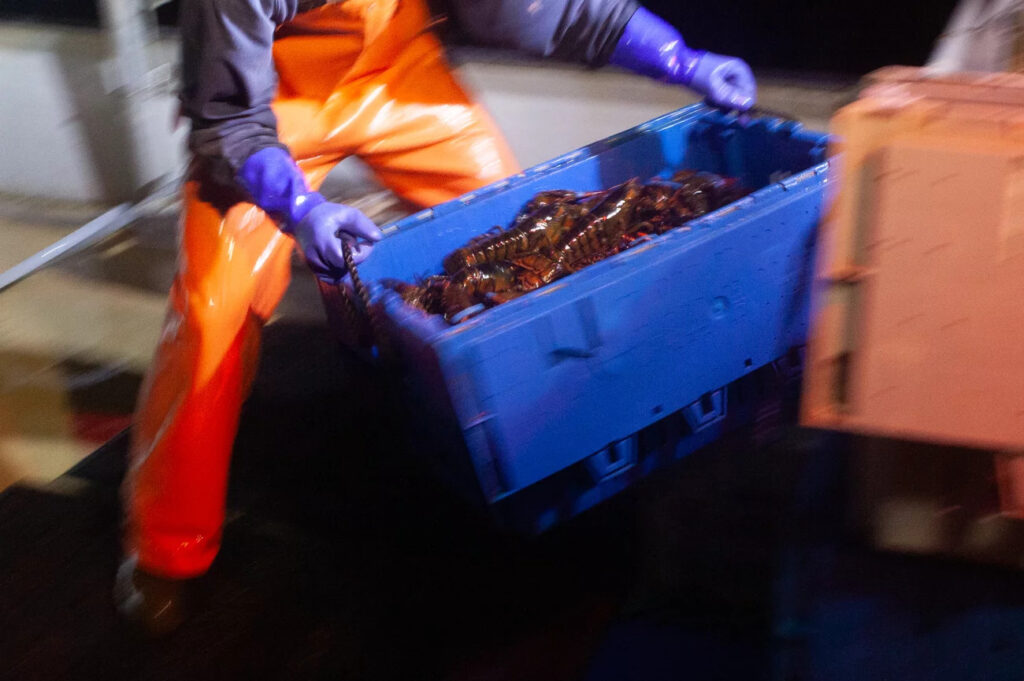
Ryan Kellman
No matter what side of the issue, most agree that pop-up gear will take some time, both to iron out the technical issues and to work on acceptance in the fishing industry. In the Northeast, a group of manufacturers, fishermen and the Woods Hole Oceanographic Institute, known as the Ropeless Consortium, is working together on improving the technology.
“Everything just needs to happen faster,” Baumgartner says. “So more focus and more resources are what’s needed. Those are coming but it’s been slow in coming.”



